12-06-2015 Designing for Urban Change. Barkenberg: potential futures for a town in decline +++ Three scenarios that respond to demographic change in Berkenberg, Dorsten, a shrinking town in Germany: The Super Mayor, Lateral Thinkers and Collective Enterpreneurs. +++ The workshop series HausAufgaben [home work] runs from 10 – 20 June 2015 +++ Exhibition at the Weissenhof Gallery from 28 April – 01 July 2018 “Small houses – big topic” +++
Wulfen New Town, a 1960s-era modern model city, was planned for 50,000 inhabitants, but was only partially realised, accommodating 30,000 residents. Currently, some 10,000 people live here. This history of failure was supposed to be alleviated by the construction of single-family residential units. What remains are bizarre typological collisions and a patchwork of haphazard demolitions. Designing for Urban Change is intended to research development options.
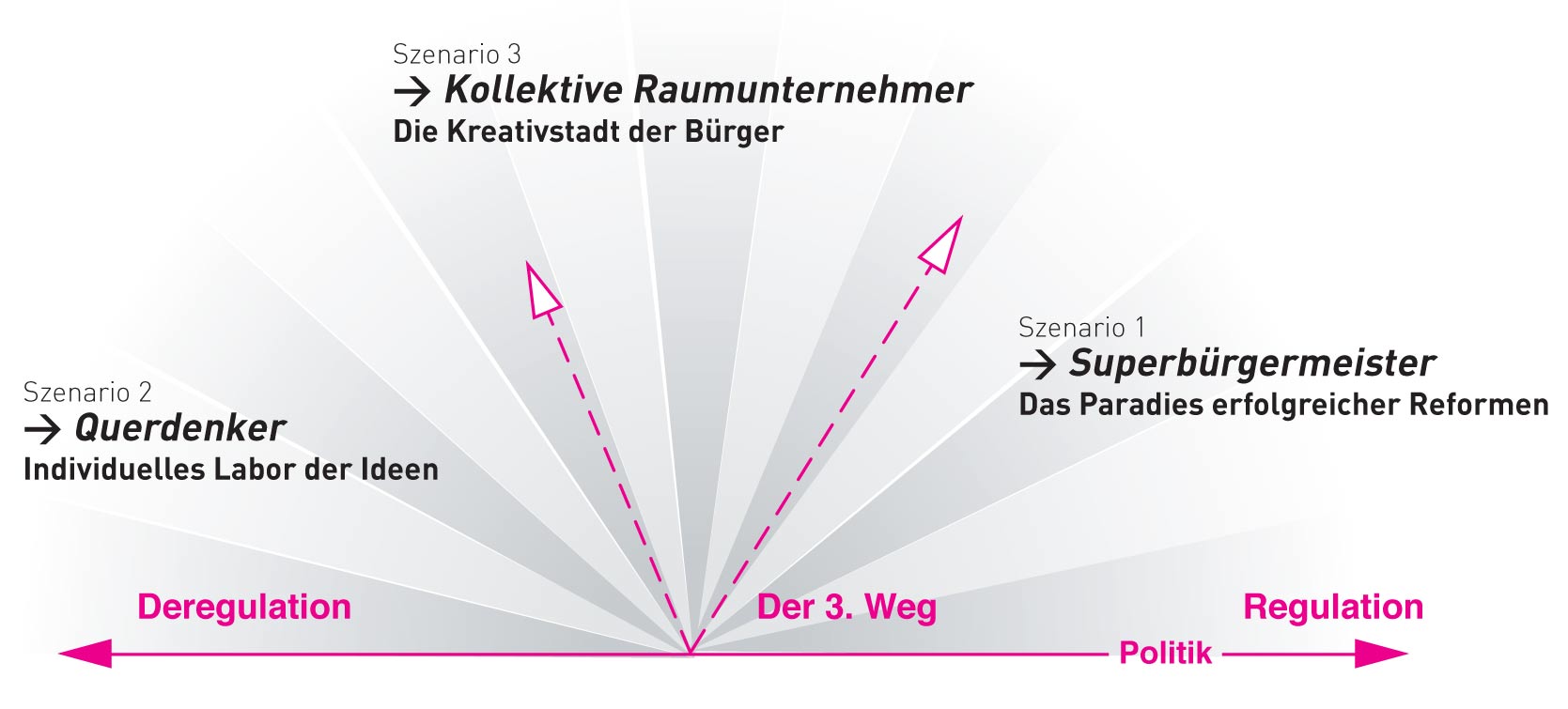 Wulfen-Barkenberg is shrinking, its population aging. Yet it is also becoming more diverse and idiosyncratic. The number of families is falling while the number of singles and pensioners is on the rise. The population pyramid with its typical bulge is turned on its head, while demographic change is running rampant.
Wulfen-Barkenberg is shrinking, its population aging. Yet it is also becoming more diverse and idiosyncratic. The number of families is falling while the number of singles and pensioners is on the rise. The population pyramid with its typical bulge is turned on its head, while demographic change is running rampant.
At the same time, roughly 53% of residential houses include en-suite apartments. The large space available offers the opportunity to create an architectural dream typology of house and garden for the nuclear family with children, car and dog – the only problem being that such families are no longer in the majority. The kids have left home. An education exodus takes place which accounts for the departure of almost 30% of the town’s 18 to 24 year olds. The enthusiasm of those who remain often masks the drawbacks in the town’s single-family residential neighbourhoods. Look more closely – the inhabitants are often faced with significant problems: limited barrier-free access, costly energy upgrades, excessive space that requires heating, floor plans that lack flexibility to create additional rooms, outside areas that are too big and demand too much care, dwindling public transport, increasing costs of private transport…
In the years to come, can Wulfen-Barkenberg address these demographic trends, or is there a need to find alternatives to deal with sustained changes in a pragmatic and creative way? What mechanisms will influence the production of urban spaces or their reactivation? What spatial effects will become visible? Different scenarios serve to illustrate future options that form the focus for discussion with both residents and the politicians who will oversee change.
The supermayor – the paradise of successful reform
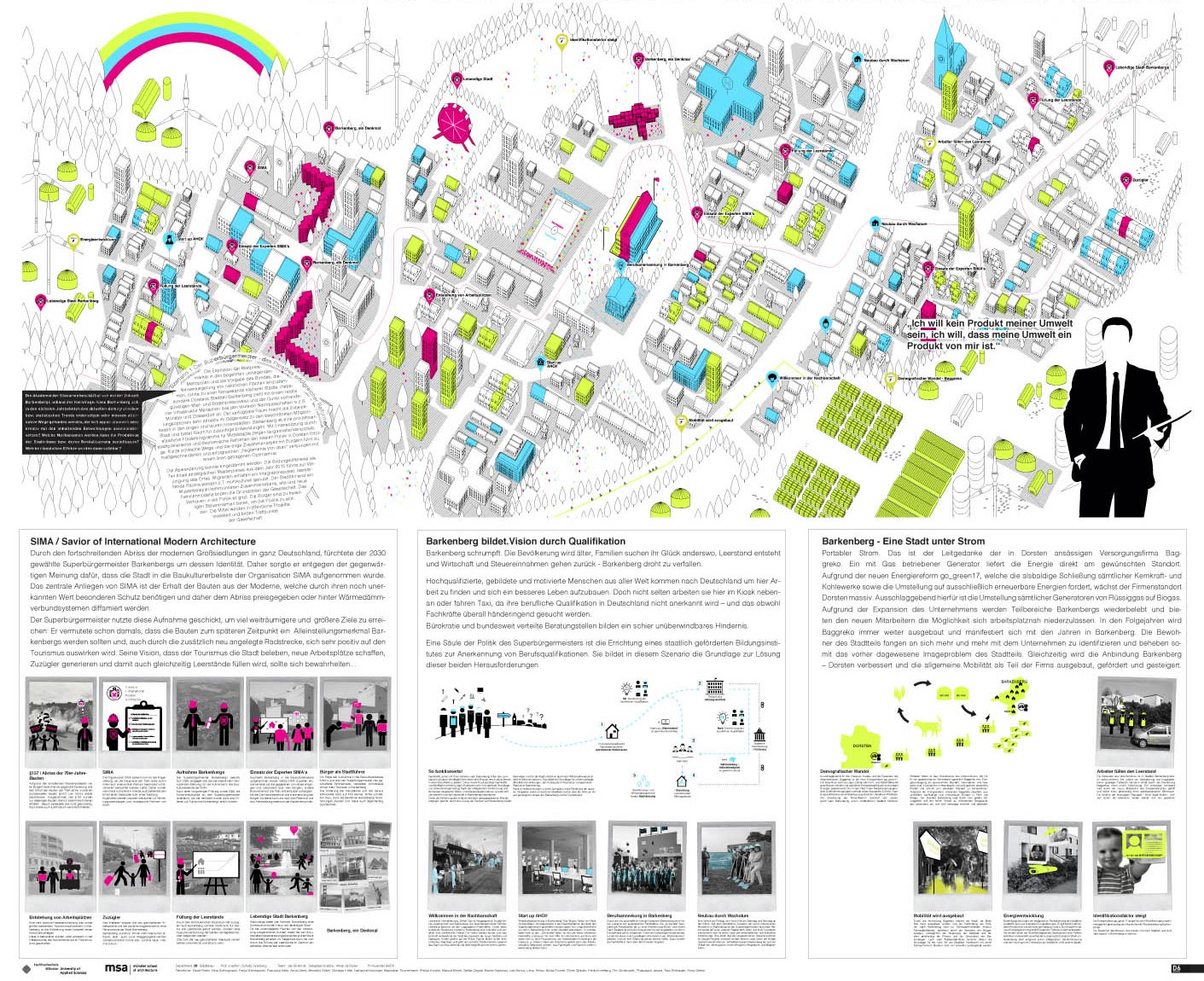
Lateral thinkers – an individual laboratory of ideas
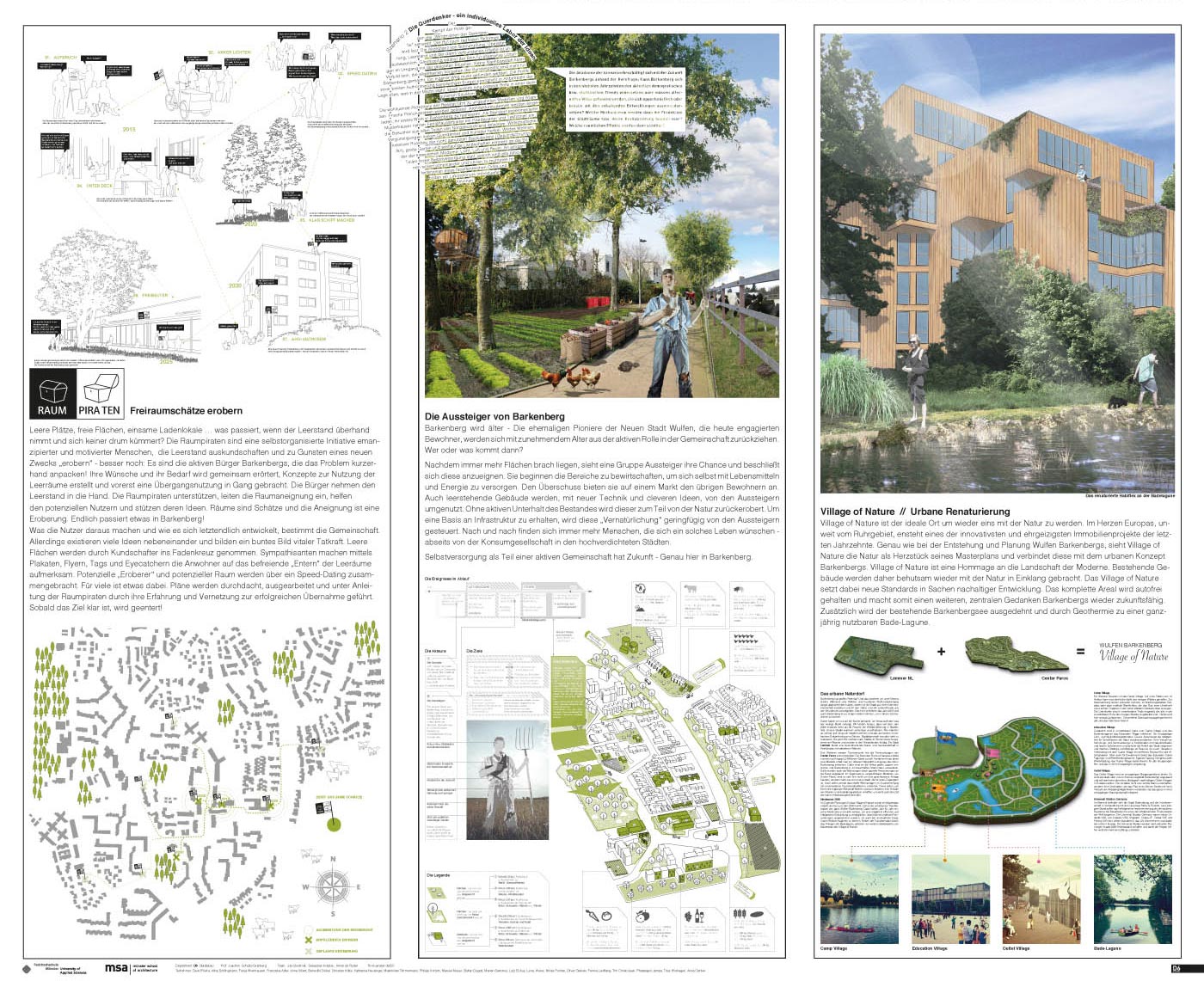
Collective spatial entrepreneur – the creative city of the citizens
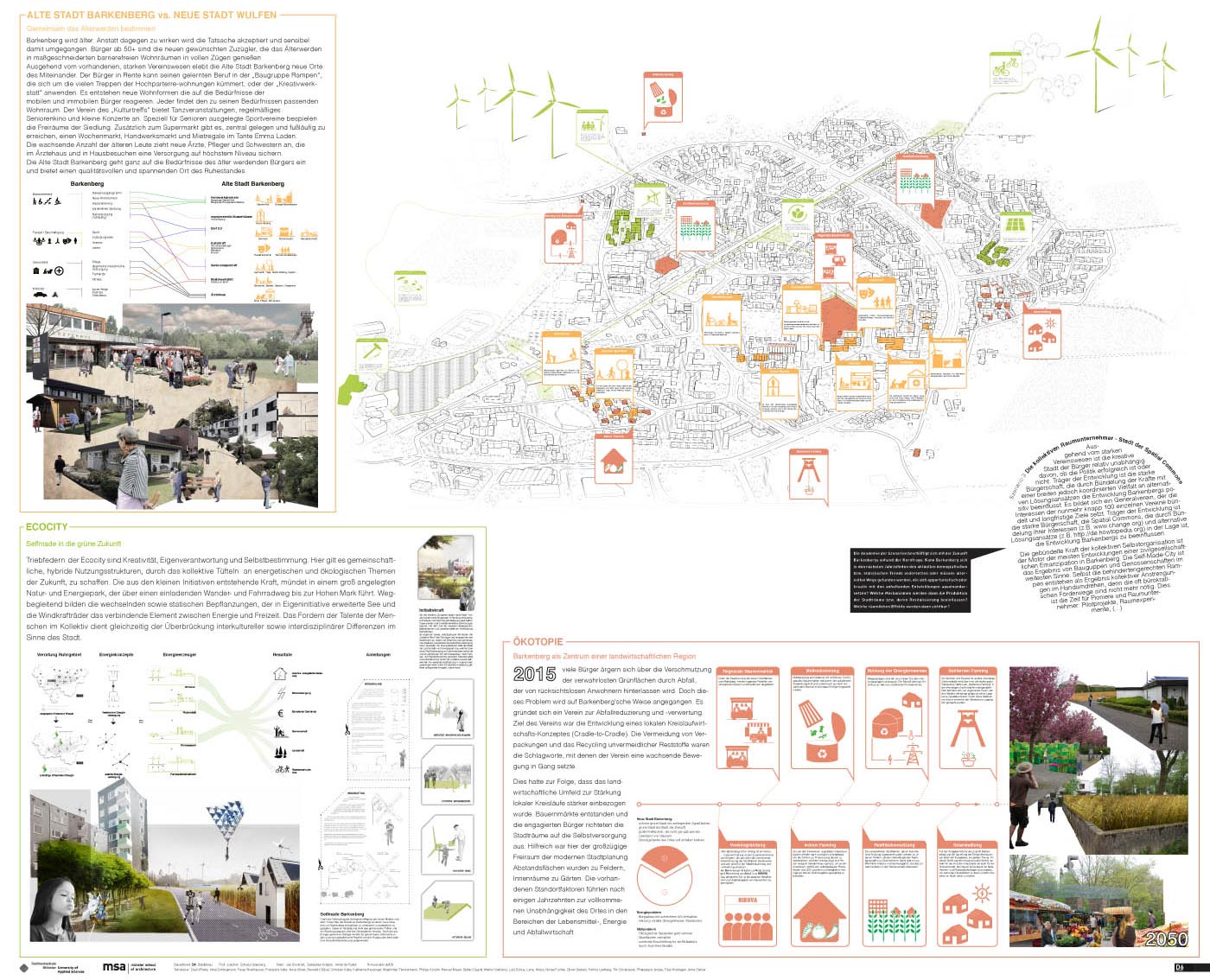
The work is presented on 2,30 x 2,70 m light boxes as a workshop exhibit.
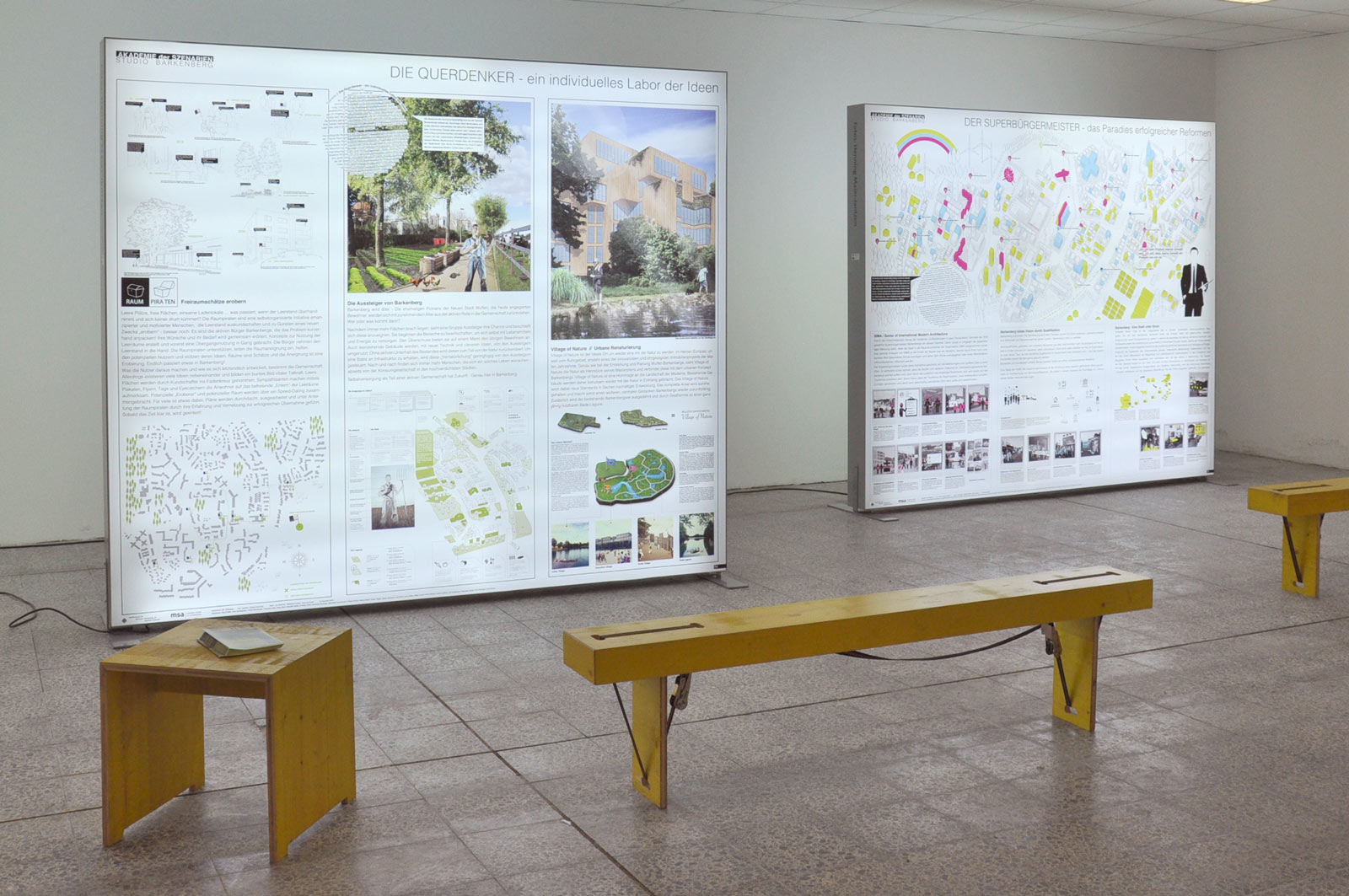

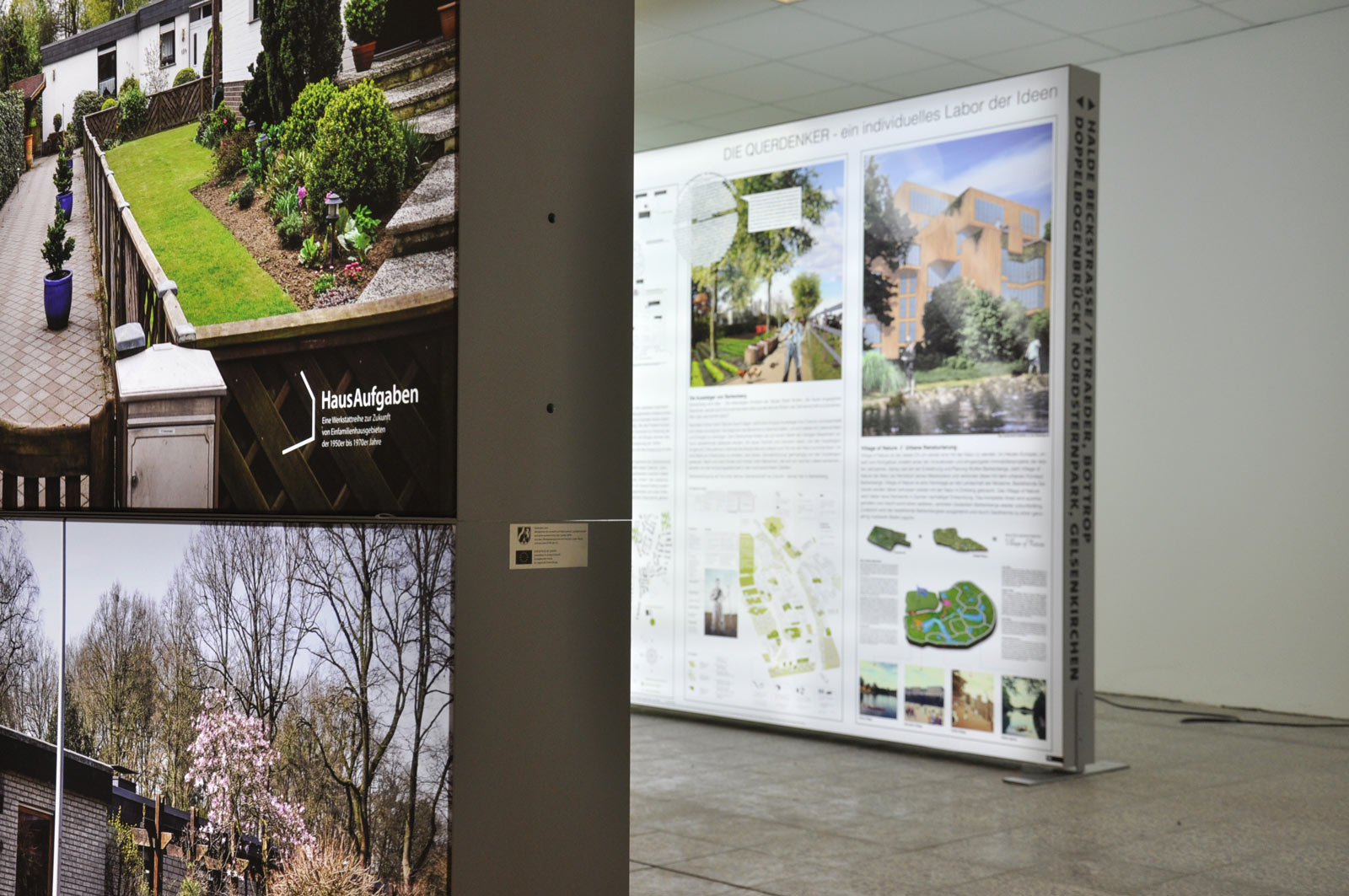
Department D6 Urban Design
Prof. Joachim Schultz-Granberg
Team: Jan Bockholt, Sebastian Krabbe, Almar de Ruiter
fh-muenster.de/D6
Participants: David Rieke, Alina Schlingmann, Fenja Wienhausen, Franziska Adler, Anna Ulbert, Benedikt Göbel, Christian Kötte, Katharina Heusinger, Maximilian Timmermann, Philipp Kortüm, Manuel Meyer, Stefan Degott, Marlen Sartorius, Lutz Euhus, Lena Weiss, Niklas Fuchte, Oliver Giebels, Femke Leeflang, Tim Christossek, Phatarapol Jampa, Titus Wiehagen, Anna Gerber
